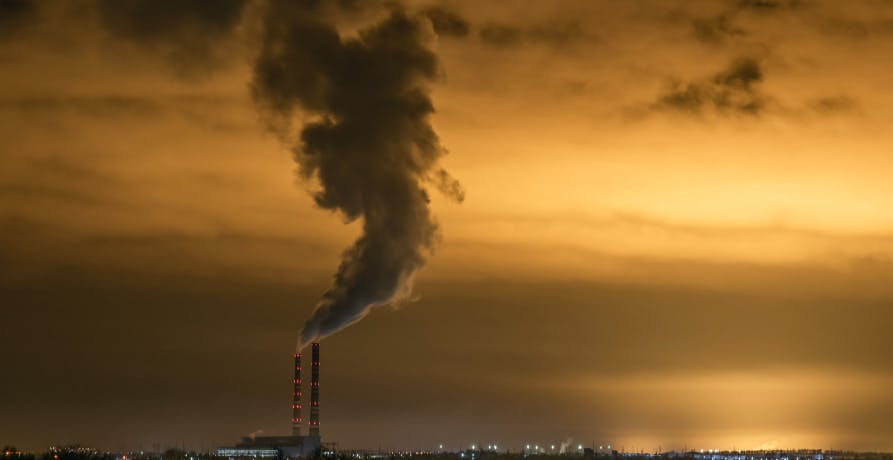
What are the 3 Pillars of Corporate Sustainability?
In this article, we'll explore what the 3 pillars of corporate responsibility are, why they're important, and how businesses can turn them into practical action.
ESG / CSR
Industries



The Paris Climate Agreement is widely regarded as an influential moment in showing world unity in the fight to stop climate change. As it turns out, the Paris Agreement was written as an improvement of an earlier treaty that included the clean development mechanism.
👉 So, what was the clean development mechanism? What treaty was it a part of? And what were some of its pitfalls?
The clean development mechanism, or CDM, was a carbon offset plan where industrialized countries with emission reduction commitments could invest in carbon offset projects based in developing countries.
👉 It was a way for multiple countries to pursue emission reductions collaboratively, helping both the wealthier country and the poorer country meet their sustainability goals.
The wealthier countries were incentivized to help based on their commitments under the Kyoto Protocol. Each project created was eligible to earn the wealthier country an amount of certified emission reduction (CER) credits that counted towards their pledge for the Kyoto Protocol.
The United Nations (UN) recognized in the 1990s that human-induced global warming was a threat to life on earth.
👉 Based on this conclusion, the UN created the United Nations Framework Convention on Climate Change (UNFCCC) to establish climate goals and hold its members accountable to its standards of progress.
Some of these goals included:
To ratify these goals, the UNFCCC created the Kyoto Protocol.
Named after the city in Japan where it was adopted, the Kyoto Protocol pledged industrialized countries to limit their greenhouse gas emissions. Nearly all world countries signed the treaty. The onus was put on the wealthiest economies, who had benefited the most from fossil fuel use, to do the legwork to combat climate change by legally binding them to their targets.
These countries were called Annex I countries, defined as “developed” or having “an economy in transition” to a market economy. All other countries were known as Annex B or Annex II countries.
The UNFCCC recognized that many of the Annex I countries would have a difficult time switching suddenly to green energy sources. Part of this had to do with the early state of wind and solar technology at the end of the century.
The main objective of the clean development mechanism was to:
Another idea behind the mechanism was to encourage countries of different sizes and amounts of global power to work together to reach their individual emission goals.
The wealthier Annex I countries earned CER credits through the funding of these projects, which they used to verify their work being done towards reaching their targets.
The Annex B countries wanted to make sure that if they signed onto the agreement, they would further their own development goals and not just assist wealthier countries in meeting their own needs.
The other two flexible mechanisms in the Kyoto Protocol were emissions trading and joint implementation. All three were market-based mechanisms.
👉 Emissions trading, also known as cap and trade (CAT) or allowance trading, is an approach to dealing with the climate crisis used in not only the Kyoto Protocol but also in other governmental bodies like in China and the European Union.
In the context of the Kyoto Protocol, emissions trading involves setting a limit or cap on the amount of pollution that can be emitted by a government. If a government emits more than the limit, they must pay taxes on the extra pollution. If a group emits less than the limit, they are given credits that they can sell. The taxes the over-emitters must pay can be bought off by buying the credits earned by the under-emitters.
Joint implementation was a method to allow two countries of the same annex to work together on an emissions reduction project. So, joint implementation was between two Annex I countries or two Annex B countries.
Typically, these environmental projects have a net impact of a lower total amount of atmospheric carbon. This is possible by either limiting carbon dioxide emissions themselves or by sequestering (removing and storing) carbon dioxide from the atmosphere – think planting trees, building renewable energy sources like solar or wind energy, and improving agricultural practices.
In the context of clean development mechanisms, Annex I countries would pay for carbon offsets in Annex B countries to count towards their CER credits.
India and China were the countries hosting most of the clean development mechanism projects. Over 2,000 projects were registered for building in India from 2003 to 2011, which totaled about a quarter of the global projects. They ranged from constructing solar farms to manufacturing air-conditioning units that do not emit the most potent greenhouse gases.
The clean development mechanism also provided unique opportunities for companies from Annex I countries that were already operating in Annex B countries. Businesses could earn their countries CER credits simply by altering their production to be more environmentally friendly.
For example, a French company with established powerplants in South Korea and Brazil had been producing Nitrous Oxide, a harmful greenhouse gas, as a byproduct of its factories. For the sake of its emissions, the company invested in equipment to destroy the nitrous acid as it is created at each plant.
An important part of the clean development mechanism was additionality – each project needed to prove that it was planned for the sake of the Kyoto Protocol and wouldn’t have happened anyway. So, in this example, the French company submitted a document that compared their proposed emissions to those in an alternative scenario where nitrous acid was not destroyed.

Something that limited the potential of the whole Kyoto Protocol was that the United States refused to sign on. Although then-president Bill Clinton signed the agreement, the Senate stopped the U.S.’s entry. It stated that the American economy would be hampered by the compliance required of the Kyoto Protocol.
Some countries were crafty with numbers in order to abuse the clean development mechanism but were not held accountable.
Russia, for example, set a target of zero emissions reduced when signing their pledge. That means they were not required to do any reduction of greenhouse gases or compensation for their burning, according to the agreement.
Iceland wrote their targets in a way that meant they had room for burning more fossil fuels. Although Iceland is a tiny emitter on the scale of our planet, it was still a marker for what other countries could get away with.
👉 China had been underreporting their emissions. It was discovered that they burnt 17% more coal than they shared in their emissions reports, meaning they needed fewer total credits to comply with the Kyoto Protocol.
At the end of the day, the Kyoto Protocol was based on cooperation. But it was too easy for countries to under-commit to the project.
When the Paris Climate Agreement was written in 2016, it was intended to replace the Kyoto Protocol and its flexible mechanisms like the clean development mechanism.
The Kyoto Protocol expired in 2020 with the Paris Agreement in effect. Because of this, no new projects are being created as clean development mechanisms. However, there are still some established projects that are ongoing, instituted before the protocol’s expiration.